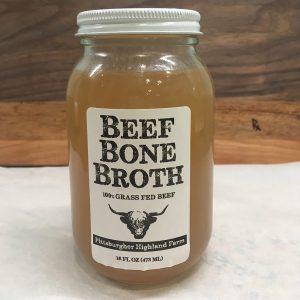 Bone broth is a staple in many traditional diets and are said to be the cure-all for many health issues ranging from the common cold to autoimmune disease and even for weight loss. What is it about bone broth that has raised such interest in the health world?
Bone broth is a staple in many traditional diets and are said to be the cure-all for many health issues ranging from the common cold to autoimmune disease and even for weight loss. What is it about bone broth that has raised such interest in the health world?
Bone broth can be made in many ways but in general it involves the slow, low, and long cooking of bones of various animals. Beef, chicken and turkey broth are common, whereas fish bone broth is less common but also healthy. Some prefer to roast the bones prior to making broth to improve flavor. Preparations vary – most include salt, some call for apple cider vinegar to help liberate minerals from the bones. Other recipes also include vegetables – most commonly onions, carrots and celery. Chicken, turkey and fish bones are typically cooked for 6-24 hours and beef bones for up to 48 hours to maximize nutrition. Once the broth is fully cooked, bones and any vegetables are typically removed. Fat can be skimmed off once the broth has cooled or consumed along with the broth.
During the slow, low cooking, minerals and proteins and other compounds are liberated from the bone, the marrow (and any meat on the bones) into the broth.
Collagen and minerals are the ‘secret sauce’ of bone broth that makes it healthy for a variety of ailments and health in general. Skin and connective tissue health, treatment for colds and other viruses, as well as healing from digestive and other inflammatory disorders have been cited as some of the health benefits of bone broth. It is also touted as a weight loss and anti-aging mechanism.
Bone broth contains gelatin, which is the cooked form of collagen. Collagen is a protein made up of amino acids that provide structure to cells. It is the most abundant protein in the body and is composed of the amino acids glycine, proline, arginine and glutamine. Collagen is found throughout the body in bones, muscles, joints, tendons, muscles and blood vessels. Production of collagen naturally slows with aging but is also reduced as a result of a diet high in sugar and low in essential nutrients, excessive sun exposure as well as smoking.
Collagen improves the integrity of all of the body’s connective tissue including the skin and the digestive tract and helps to heal and prevent intestinal permeability and the balance of bacteria in the digestive system. Its anti-aging effects are a large part of its popularity along with collagen powders and supplements. It is also said to reduce cellulite by improving cell structure and suppleness.
Electrolytes and other minerals – calcium, phosphorus, magnesium and potassium are released from the bones during cooking. These minerals are highly bioavailable. That is, they are easily absorbed into our system as a result of their ‘free’ form.
In addition to collagen and minerals, bone broth contains chondroitin sulfate and glucosamine and hyaluronic acid, which contribute to joint health, reduce inflammation and hydrate skin.
When making bone broth it is important to use the bones of pastured animals – those consuming their natural diet free of pesticides and herbicides (and GMO free), rather than animals that have been confined and fed an unnatural diet and treated with hormones and antibiotics. This is because animal bones are known to be a storage site for toxins that would cause damage to the organism.
Bone broth has also been purported to contribute to sustainable weight loss. This claim is the result of several characteristics of bone broth, particularly its anti-inflammatory effects. The amino acids are also believed to contribute to muscle building. Bone broth has also been used in various religious and non-religious fasting routines because of its nutrient density.
One of the primary uses of bone broth is for the treatment or prevention of illness. Its minerals and amino acids as well as antioxidants are known to help the body fight infection and strengthen its innate defenses to prevent illness. It ability to increase the proportion of beneficial bacteria in the digestive system also contributes to improved immunity as these bacteria stimulate the production of antibodies that fight infection.
The resurgence of interest in bone broth reflects the effort to reclaim traditional health and healing methods as well as to eat ‘nose-to-tail.’